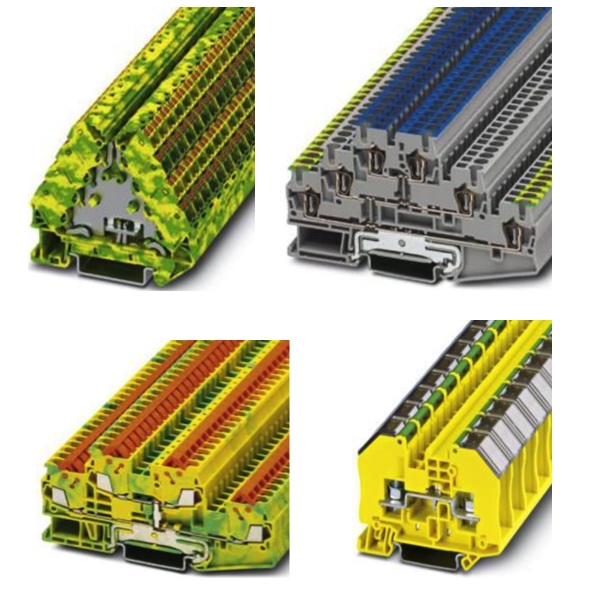Ground Terminal Blocks

Ground terminal blocks are put to work in electrical setups to form dependable, secure links to the ground. They are essential for the safe and proper funcTerminal blocks for grounding are built to furnish a way to connect conductors to earth ground that is not just serviceable but also dependable. In most cases, the terminal blocks are affixed to a DIN rail inside an industrial control panel or electrical system. It is easy to identify these blocks, because the housings are green and yellow. That color scheme serves a practical purpose, too: it gives a visual cue that the connection is to ground. Installers can be confident that when a terminal block for grounding is found, all metallic parts and any exposed wire are bonded to earth.
Ground terminal block construction typically includes a metal base that makes direct contact with the DIN rail, causing the entire rail to act as a grounding point. They function well with an array of conductor sizes and cross sections, making them versatile for different wiring configurations in the power and control circuit domains. The common connection technologies are spring or screw. Both secure the clamping of copper conductors while serving up long-term reliability, even in harsh environments. Accessories that can enhance the operation of ground terminal blocks include end stops, cross bridges, and marking systems.
FAQs
Are ground terminal blocks the same shape as other terminal blocks and do they attach to din rail the same way?
Yes, ground terminal blocks typically have the same shape as other terminal blocks and attach to DIN rails in the same way.
Are there any features on a ground terminal block that make it easy and flexible for testing?
Yes, many ground terminal blocks include built-in test points or allow the use of cross bridges and marking accessories, making electrical testing easier and more flexible.
Terminal Block Basics
Single Level Pass Through Terminal Blocks are used to connect two wires together with a common junction point. This is helpful when a component needs to be disconnected or isolated within a circuit. These are the most common types of terminal blocks in industrial applications.
Ground Terminal Blocks function almost exactly like most pass through terminal blocks with one exception: they are grounded. These terminal blocks have a metal connection from where the wire is terminated, all the way to the bottom of the block where it will clamp into the panel. This allows for an electrical circuit to be grounded without running a wire to the main ground connection on a breaker or surge protector.
Fused Terminal Blocks function almost exactly like most pass through terminal blocks with one exception: the presence of a fuse. This fuse provides protection for components from too much voltage or current.
Multilevel Terminal Blocks are used to connect two wires together with a common junction point, just like single pass though terminal blocks, but with the advantage of making two electrical connections in the same block. These blocks also incorporate fuses and can be grounded.
Disconnect Terminal Blocks are similar to fused blocks, however the disconnect stops the flow of electricity by lifting a lever on the terminal block. Unlike fuse blocks, they are a more permanent solution, but will not provide any protection in the event of a power surge.

